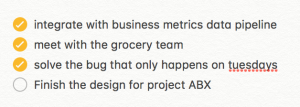Fearless Salary Negotiation (https://fearlesssalarynegotiation.com) is a book about negotiating salaries after you get an offer. Josh Doody’s book covers communicating with hiring managers, dealing with the dreaded salary question, how to write a counteroffer and more.
The first section of the book covers how to determine your market value.
One thing to be aware of is that companies have pay grades which can affect the size of any raises you get. If you are hired into a company at the top of a pay grade, you may have to get promoted before you can get any raises. Whereas if you start at the bottom of a pay grade, you can get large raises until you reach the top of that grade. This can also be a factor when negotiating salary, because you may need a salary that they cannot offer to you without bumping you up to the next grade.
The next section covers negotiating higher pay when you switch jobs
Getting better at negotiating offers is why I bought this book. Most employees will negotiate less than 20 offers in their career. But a recruiter or hiring manager could negotiate 20 offers in a single year. This disparity is a bigger deal than most people realize because each offer you don’t negotiate could represent a loss of $10,000 a year for the rest of your career. The book includes a few sample emails which I have used to get over $5000 increases on several offers.
The last part of the book is about how to get a raise in your current job.
I have never bothered negotiating raises at my current job. You should avoid any situation where you cannot switch to a new job for more money. Your employer has the structural advantage in this market. You only have leverage when you have multiple offers. Interviewing is a huge time commitment. If you are not going to take the biggest raise you can get its not worth it. My last job search took almost 24 hours of my time for each offer I got. If you stay you will almost always be leaving money on the table and that is after blowing days worth of time.
I recommend Fearless Salary Negotiation to anyone who is looking for another job and wants to get paid more.

